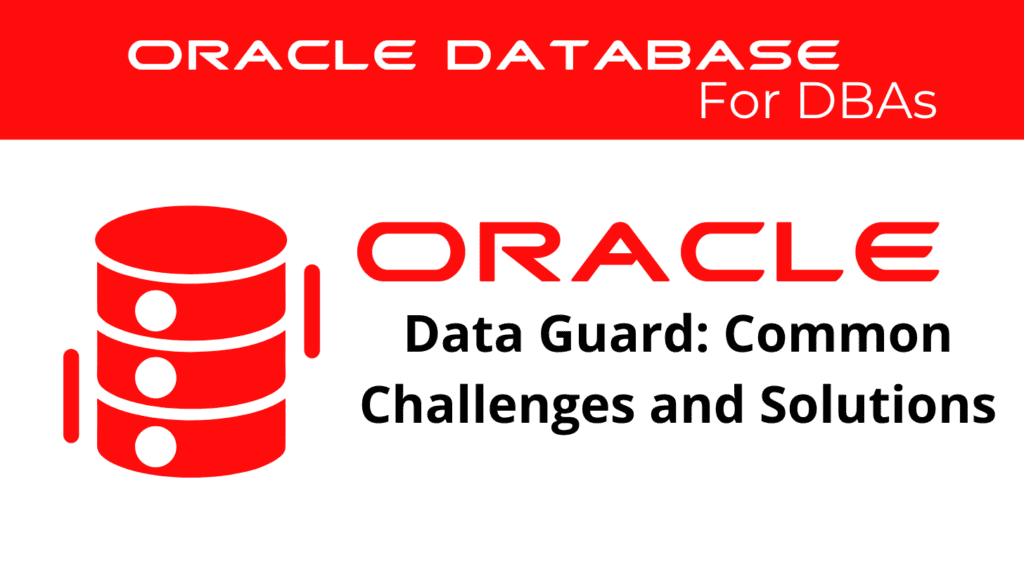
Oracle Data Guard is a critical component for maintaining high availability, data protection, and disaster recovery in Oracle Database environments. In this blog, we will explore common challenges encountered when using Oracle DG and provide practical solutions to address them. Our goal is to equip database administrators with the knowledge to effectively troubleshoot and optimize their Data Guard setups.
Common DG Issues
Oracle DG, while robust, is not without its challenges. Here are some common issues that administrators might face:
- Network Latency: Network latency can significantly affect the performance of Data Guard. High latency can lead to delays in data synchronization between the primary and standby databases.
- Data Inconsistency: Data discrepancies between the primary and standby databases can arise due to various factors, including network issues and configuration errors.
- Configuration Errors: Incorrect configuration settings can prevent Data Guard from functioning correctly. This includes improper initialization parameters and network configurations.
- Role Transition Failures: Problems during switchover or failover operations can lead to prolonged downtime and potential data loss.
Understanding these issues is the first step in effectively managing Oracle Data Guard.
Oracle Data Guard Solutions
Addressing the challenges associated with Oracle Data Guard requires a combination of best practices and effective troubleshooting. Here are solutions to the common issues discussed:
- Mitigating Network Latency: Optimize network settings to reduce latency. Ensure that the network bandwidth is sufficient and consider using Oracle’s DG network compression feature.
- Ensuring Data Consistency: Regularly monitor and verify the synchronization status of the standby database. Use tools like Oracle’s Data Guard Broker and Oracle Enterprise Manager to detect and resolve inconsistencies.
- Correct Configuration: Double-check all configuration settings and follow Oracle’s best practices for setting up Data Guard. Use the DG Broker for easier configuration management.
- Successful Role Transitions: Test switchover and failover procedures in a controlled environment to ensure smooth transitions. Automate failover processes using Fast-Start Failover to minimize downtime.
Implementing these solutions will help maintain the reliability and efficiency of your Oracle Data Guard setup.
Oracle DG Solutions – Best Practices for Oracle Data Guard
Adhering to best practices is essential for maximizing the performance and reliability of Oracle Data Guard. Here are some recommended practices:
- Regular Testing: Conduct regular tests of your DG setup, including role transitions, to ensure everything functions as expected.
- Comprehensive Monitoring: Use Oracle Enterprise Manager and Data Guard Broker to continuously monitor the health and performance of your DG environment.
- Backup Strategies: Implement robust backup strategies to protect against data loss. Ensure that both primary and standby databases are included in backup plans.
- Security Measures: Secure your DG configuration by implementing Oracle’s recommended security practices, including network encryption and user authentication.
Following these best practices will help you maintain a secure and efficient Data Guard environment.
See more on Oracle’s website!
Conclusion
In conclusion, Oracle DG is a powerful tool for ensuring high availability and data protection. By understanding common challenges and implementing effective solutions, administrators can optimize their Data Guard setups. Regular testing, comprehensive monitoring, and adherence to best practices are key to maintaining a robust and reliable Data Guard environment.
Be Oracle Dataguard certified, this world is full of opportunities for qualified DBAs!





